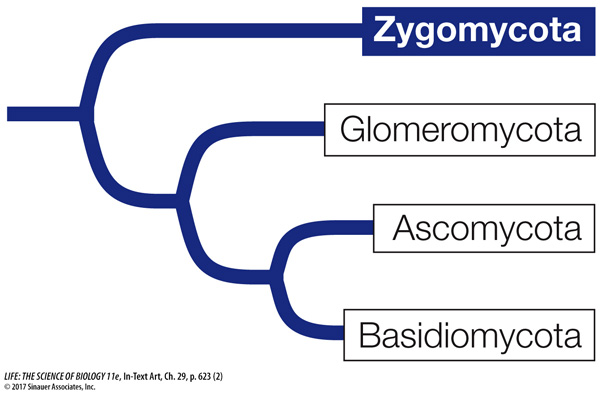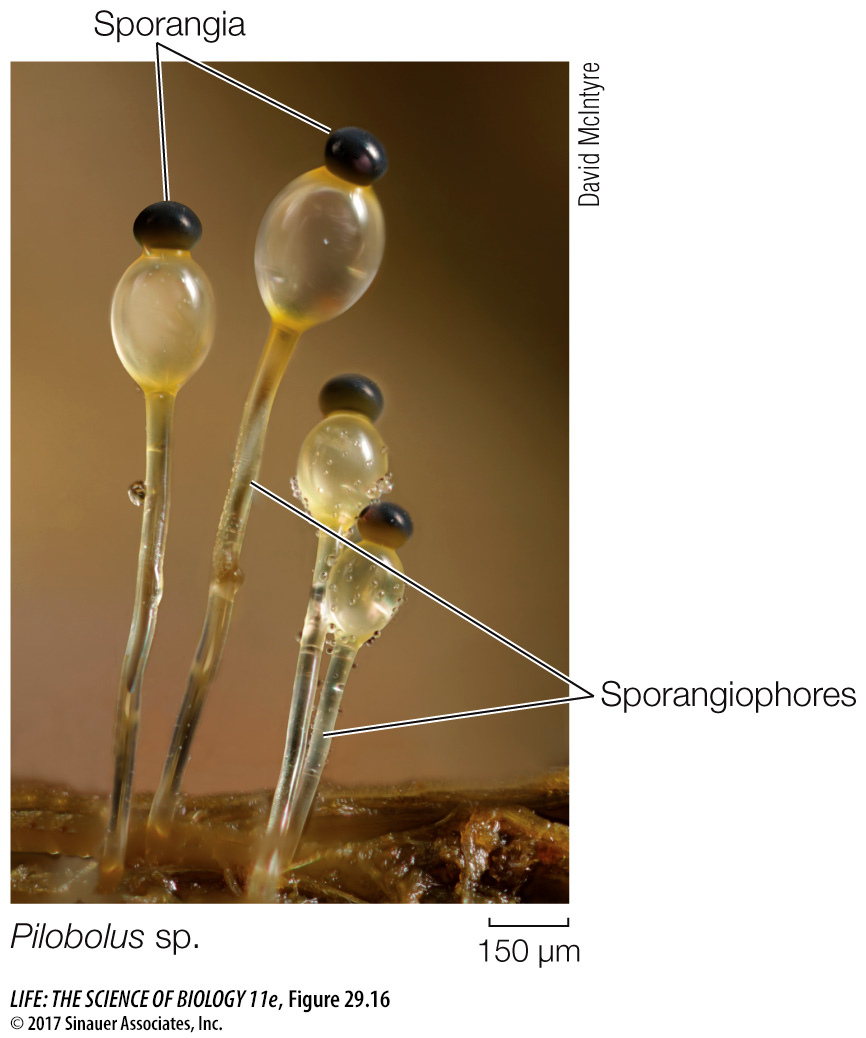Some fungal life cycles feature separate fusion of cytoplasms and nuclei
Most members of the remaining four groups of fungi are terrestrial. Although the terrestrial fungi grow in moist places, they do not have motile gametes, so liquid water is not required for fertilization. Instead, the cytoplasms of two individuals of different mating types fuse (a process called plasmogamy) before their nuclei fuse (a process called karyogamy; see Figure 29.12). Sexual species of terrestrial fungi include some zygospore fungi, sac fungi, and club fungi.

Zygospore fungi reproduce sexually when adjacent hyphae of two different mating types release chemical signals that cause them to grow toward each other. These hyphae produce gametangia, which are specialized cells for reproduction that are retained as part of the hyphae. In the gametangia, nuclei replicate without cell division, resulting in multiple haploid nuclei in both gametangia. The two gametangia then fuse to form a zygosporangium that contains many haploid nuclei of each mating type (Figure 29.15B). Haploid nuclei of different mating types then pair up to form multiple diploid nuclei within the zygosporangium. A thick, multilayered cell wall develops around the zygosporangium to form a well-
625
The zygospore fungi include four major lineages of terrestrial fungi that live on soil as saprobes, as parasites of insects and spiders, or as mutualists of other fungi and invertebrate animals. They produce no cells with flagella, and only one diploid cell—

Animation 29.1 Life Cycle of a Zygospore Fungus
www.life11e.com/
More than 1,000 species of zygospore fungi have been described. One species you may have seen is Rhizopus stolonifer, the black bread mold. Rhizopus produces many stalked sporangiophores, each bearing a single sporangium containing hundreds of minute spores (see Figure 29.15B).